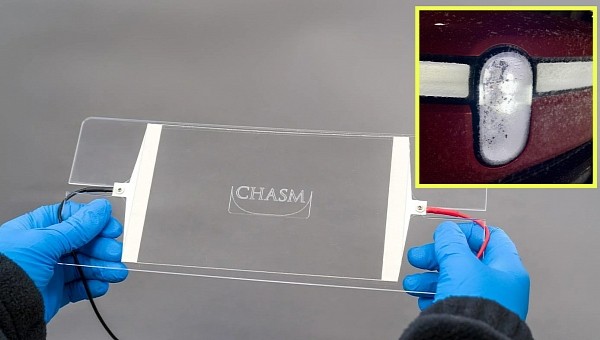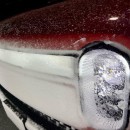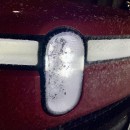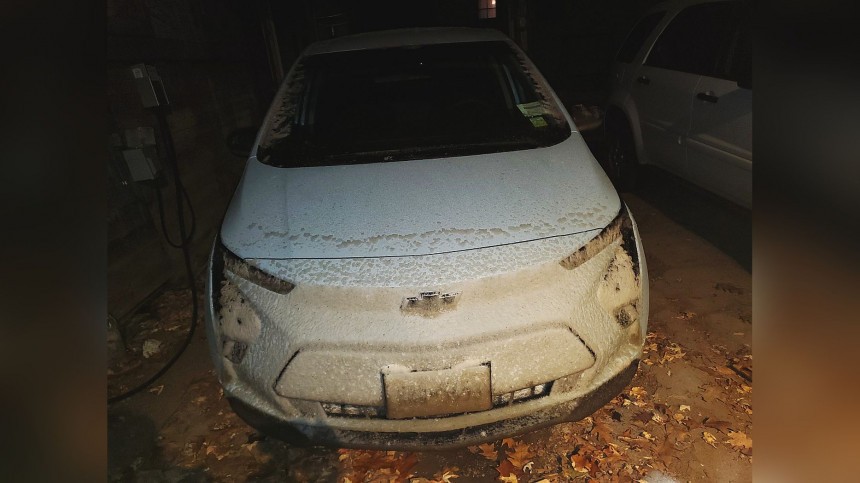People living in snowy areas and driving newer, better-equipped cars have seldom complained about having to defrost their windshields and – get this – their headlamps too! But someone may have found a solution that could work industry-wide. Let’s see what it is and why it has so much potential.
Light-emitting diode bulbs are what most manufacturers pick nowadays if they want to install great headlights on their cars, even though some drivers claim they are too bright at night. But the best thing about them is probably their capacity to handle colder climates. The efficiency is not being impacted by low temperatures, so there's nothing to worry about regarding illumination. LEDs don’t produce very much heat when running, use less energy, and last longer too!
All this is great for reliability and efficiency, but what happens when the LEDs on your vehicle meet with the harshness of winter and all that is associated with it? Snow, grime, and freezing rain can help form unwanted deposits on the headlight housings. Since LEDs do not need heat to create light like incandescent or halogen bulbs do, it’s going to be challenging to get rid of everything that’s accumulating on the housings because their internal temperature is not changing while the lights are turned on.
That’s something some Rivian owners discovered last year when they reported that slush can cover the main headlamps while driving in winter. This meant they had to stop from time to time and clean them otherwise they would have lost visibility.
However, the issue of LED headlights producing undetectable heat and getting covered by all sorts of grimy stuff is not something specific to battery-electric vehicles like the R1T or R1S. The problem is well-known by Canadians, for example, who bought newer cars and discovered that they’re somehow losing visibility during winter. Scraping off the ice buildup is a major pain, especially if you’re getting caught in a snowstorm or the cold wind is blowing strong.
But someone thought of a solution that might work with any vehicle that has LED headlamps, no matter what shape their housings have. It’s a flexible film that needs only 12V to work and can safely reach temperatures of around 120 degrees Fahrenheit (49 degrees Celsius). That’s a lot of heat for something that’s over 95% optically transparent and measures just 0.01 in (0.5 mm) in thickness.
The conductive film called AgeNT is made by “printing carbon nanotubes (CNTs) on top of silver nanowire or copper metal mesh substrates,” as CHASM says. It sounds fancy because, well… It is! Carbon nanotubes are used in the aviation industry but are also found in bulletproof jackets. Moreover, scientists hope to replace the silicone transistors we currently have with these absurdly small carbon tubes because they are known to be strong and provide electrical redundancy.
The film can achieve a power draw of around 2,000W per 10.7 square feet (one square meter) which proves that it can be set up to work in various scenarios and can take many forms - including that of a headlight housing!
Unfortunately, buying AgeNT is a tad bit complicated for individuals. If you want to use this product, you must contact the company, tell them about your plans, figure out together if they can happen, pay, and you may even have to sign a non-disclosure agreement!
The company that makes AgeNT is also involved in producing other cool stuff for human safety like advanced yet affordable water filters, electromagnetic impulse shields, a solution to lower the amount of cement needed in concrete, and budget-friendly carbon nanotubes for EV batteries that help them perform better, without affecting the chemistry.
But until the automotive industry decides on a cost-effective solution that can work for almost everyone, maybe it would be a good idea to keep a de-icer spray around. Or, you could apply some canola-based spray oil before going for a drive, if your car isn’t aerodynamic enough to eliminate these deposits by putting them face-to-face with air resistance. It creates a thin oily film that can prevent buildups from happening.
All this is great for reliability and efficiency, but what happens when the LEDs on your vehicle meet with the harshness of winter and all that is associated with it? Snow, grime, and freezing rain can help form unwanted deposits on the headlight housings. Since LEDs do not need heat to create light like incandescent or halogen bulbs do, it’s going to be challenging to get rid of everything that’s accumulating on the housings because their internal temperature is not changing while the lights are turned on.
That’s something some Rivian owners discovered last year when they reported that slush can cover the main headlamps while driving in winter. This meant they had to stop from time to time and clean them otherwise they would have lost visibility.
However, the issue of LED headlights producing undetectable heat and getting covered by all sorts of grimy stuff is not something specific to battery-electric vehicles like the R1T or R1S. The problem is well-known by Canadians, for example, who bought newer cars and discovered that they’re somehow losing visibility during winter. Scraping off the ice buildup is a major pain, especially if you’re getting caught in a snowstorm or the cold wind is blowing strong.
But someone thought of a solution that might work with any vehicle that has LED headlamps, no matter what shape their housings have. It’s a flexible film that needs only 12V to work and can safely reach temperatures of around 120 degrees Fahrenheit (49 degrees Celsius). That’s a lot of heat for something that’s over 95% optically transparent and measures just 0.01 in (0.5 mm) in thickness.
The film can achieve a power draw of around 2,000W per 10.7 square feet (one square meter) which proves that it can be set up to work in various scenarios and can take many forms - including that of a headlight housing!
Unfortunately, buying AgeNT is a tad bit complicated for individuals. If you want to use this product, you must contact the company, tell them about your plans, figure out together if they can happen, pay, and you may even have to sign a non-disclosure agreement!
The company that makes AgeNT is also involved in producing other cool stuff for human safety like advanced yet affordable water filters, electromagnetic impulse shields, a solution to lower the amount of cement needed in concrete, and budget-friendly carbon nanotubes for EV batteries that help them perform better, without affecting the chemistry.
But until the automotive industry decides on a cost-effective solution that can work for almost everyone, maybe it would be a good idea to keep a de-icer spray around. Or, you could apply some canola-based spray oil before going for a drive, if your car isn’t aerodynamic enough to eliminate these deposits by putting them face-to-face with air resistance. It creates a thin oily film that can prevent buildups from happening.







